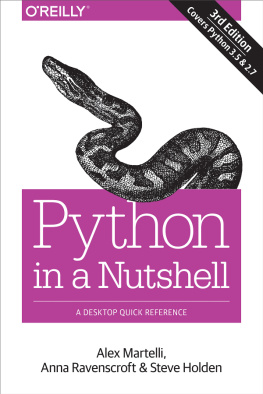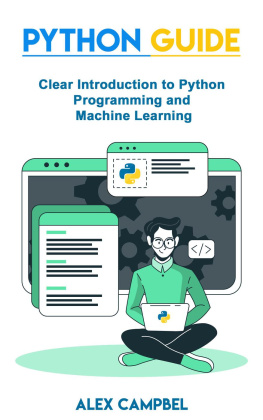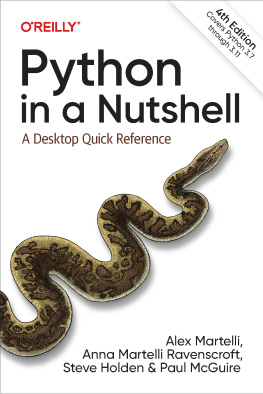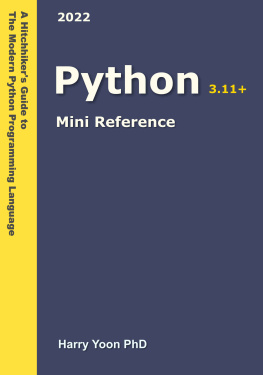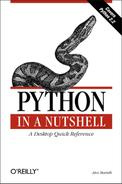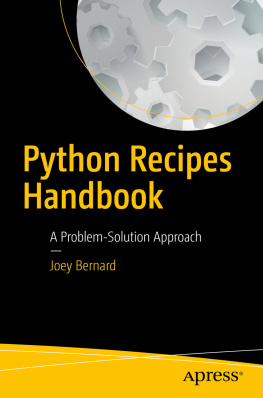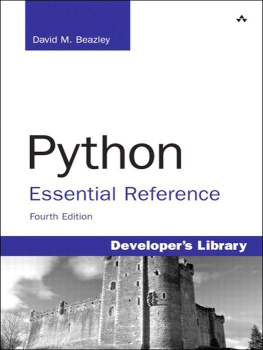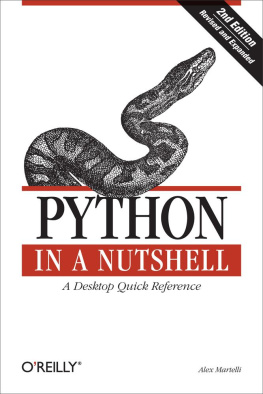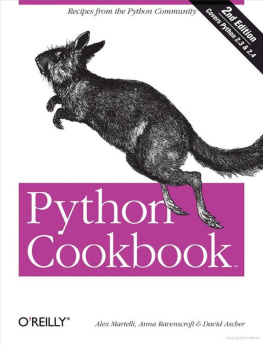Covers Python syntax, built-in data types, expressions, statements, control flow, and how to write and call functions.
Covers object-oriented programming in Python.
Covers how to use exceptions for errors and special situations, and logging.
Covers how Python lets you group code into modules and packages, how to define and import modules, and how to install third-party Python packages. The chapter also covers working with virtual environments to isolate project dependencies.
Covers built-in data types and functions, and some of the most fundamental modules in the standard Python library (roughly, the set of modules supplying functionality that, in some other languages, is built into the language itself).
Covers Pythons string-processing facilities, including Unicode strings, byte strings, and string literals.
Covers Pythons support for regular expressions.
Part III, Python Library and Extension Modules
Covers how to deal with files and text processing using many modules from Pythons standard library and platform-specific extensions for rich text I/O. The chapter also covers issues of internationalization and localization, and the specific task of defining interactive text-mode command sessions with Python.
Covers Pythons serialization and persistence mechanisms, as well as Pythons interfaces to DBM databases and relational (SQL-based) databases, particularly the handy SQLite that comes with Pythons standard library.
Covers how to deal with times and dates in Python, using the standard library and popular third-party extensions.
Helps you to achieve advanced execution control in Python, including execution of dynamically generated code and control of garbage collection. The chapter also covers some Python internal types, and the specific issue of registering clean-up functions to execute at program-termination time.
Covers Pythons functionality for concurrent execution, both via multiple threads running within one process and via multiple processes running on a single machine. The chapter also covers how to access the processs environment, and how to access files via memory-mapping mechanisms.
Shows Pythons features for numeric computations, both in standard library modules and in third-party extension packages; in particular, the chapter covers how to use decimal numbers or fractions, instead of the default binary floating-point numbers. The chapter also covers how to get and use pseudorandom and truly random numbers, and how to speedily process whole arrays (and matrices) of numbers.
Deals with Python tools and approaches that help ensure your programs are correct (i.e., that your programs do what theyre meant to do), find and fix errors in your programs, and check and enhance your programs performance. The chapter also covers the concept of warning and the Python library module that deals with it.
Part IV, Network and Web Programming
Covers the basics of networking with Python.
Covers alternatives for asynchronous (event-driven) programming, particularly modern coroutine-based architectures and lower-level multiplexing, with standard library modules.
Covers modules in Pythons standard library to write network client programs, particularly for dealing with various network protocols from the client side, sending and receiving emails, and handling URLs.
Covers how to serve HTTP for web applications in Python, using popular third-party lightweight Python frameworks leveraging Pythons WSGI standard interface to web servers.
Covers how to process email messages, and other network-structured and encoded documents, in Python.
Covers popular third-party Python extension modules to process, modify, and generate HTML documents.
Covers Python library modules and popular extensions to process, modify, and generate XML documents.
Part V, Extending, Distributing, v2/v3 Migration

